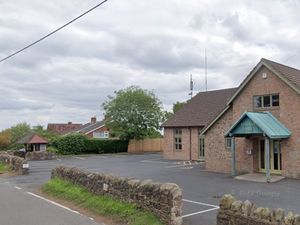Shropshire flooding: As clean up begins, so do the vital questions
As storms sweep across the country, as rivers rise and families flee their drenched homes, one question is on everybody’s lips – what is going to be done about it?
It’s not just what’s happening this week. This is an historically dreadful incident that will live long in the memory, but it’s part of something far larger.
Last year was one of the hottest on record, and this week is sure to go down as one of the wettest. It indicates a big change in the climate in Britain.
The severity of this week’s storms really can’t be overstated. In Herefordshire, the river Wye rose to its highest level on record. Burton on Trent in Staffordshire woke up to a waterlogged landscape on Tuesday. South Wales has been severely affected.
As the day dawned, there were 10 severe flood warnings in place nationally, plus 150 flood warnings, meaning flooding was expected, and 192 flood alerts, meaning flooding is possible.
About 1,000 Environment Agency staff have been on duty, with more than three miles of flood barriers deployed and 90 pumps in action.
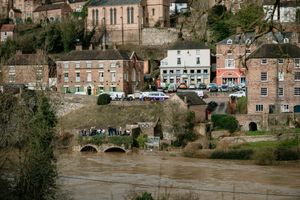
But as yet, there has been no announcement about what money will be made available to support the clean-up operation, nor any indication of how the Government will help.
After flooding in Yorkshire in December, the Institute of Public Policy Research think tank said further investment was required in flood defences, arguing that twice as much had been spent on clean-up costs than prevention.
See also:
Environment Secretary George Eustace said that while extreme weather events are becoming more common, he denied that there had been no intervention.
“It’s not the case that we’re not doing anything; we’ve done a huge amount,” he said.
“We can’t do anything about these extreme weather events but the steps that we’ve taken have meant the impact of those weather events have affected fewer properties.”
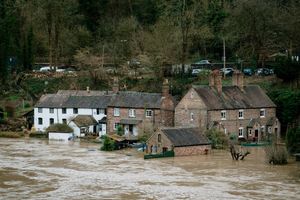
He continued: “We’ll never be able to protect every single household just because of the nature of climate change and the fact that these weather events are becoming more extreme, but we’ve done everything we can with a significant sum of money, and there’s more to come.”
That said, having flood barriers in place hasn’t necessarily meant places have been immune from the rising tide and further creative thinking may be required.
The flooding in Ironbridge and Shrewsbury came despite the defences, installed in the latter case after the events of the year 2000. At that time, 100,000 gallons of water were flashing through the town every second.
The previous three months had seen 14 inches of rain fall, and the water just kept coming so that by the end of November the rivers could no longer cope.
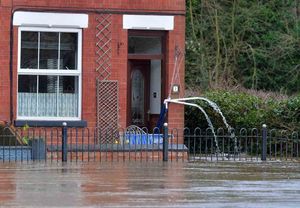
Bridgnorth was also affected, with the river peaking at 5.3 metres (more than 17 feet), and the historic Hampton Loade ferry, the last of its kind still operating, disappeared into the depths of the Severn.
In 2006, Shrewsbury was only saved by its new flood defences, while flash flooding hit Cosford and Albrighton.
The following year, part of the Severn Valley Railway collapsed because of flooding, and a home collapsed into the River Corve in Ludlow.
The issue of flood prevention is sure to arise in the coming weeks, and Dr Lucy Crockford, senior lecturer in soil and water management at Harper Adams University, is part of a project looking at ways of creating natural management schemes, the Slow the Flow scheme.
One such scheme has seen dams made from natural materials placed on tributaries to major rivers, helping hold back water during periods of heavy rain. One, Farm the Flow, has been installed at Coalbrookdale, although its impact is still being monitored.
She says that it is important to try to hold back water further upstream to make it easier to regulate how it flows into rivers going through towns – a key issue with extreme weather conditions becoming more common.
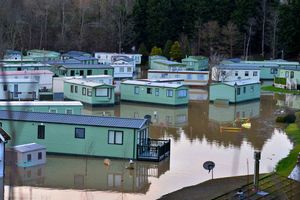
“I think we are in a battle,” she said. “An awful lot of the current flood prevention activities are to tackle the situation we have now, and the fact is it is going to get worse.
“But I’m optimistic, because there’s lots of farmland that could be the key to reducing flooding – still used for farming, but in a more sustainable way.”
She added: “We need a lot more education and engagement with the natural ways of trying to hold back water and better flood management.”
The problems may still not be at an end. Met Office spokesman Nicky Maxey said the spell of unsettled weather was likely to continue until mid-March.
“There’s certainly unsettled weather,” she said. “But whether it will be of a magnitude that needs to be named is uncertain at this stage. It may be that it brings bad weather to Scotland, but the rest of the country will be fine.
“Storms are named on the basis of impact. For example, a 50mph wind on a mountain top in Snowdonia will have less impact than one blowing through Shrewsbury town centre.”
At the time of writing Boris Johnson has not reacted to the rising water levels. There will be a lot of scrutiny over what he does say.





